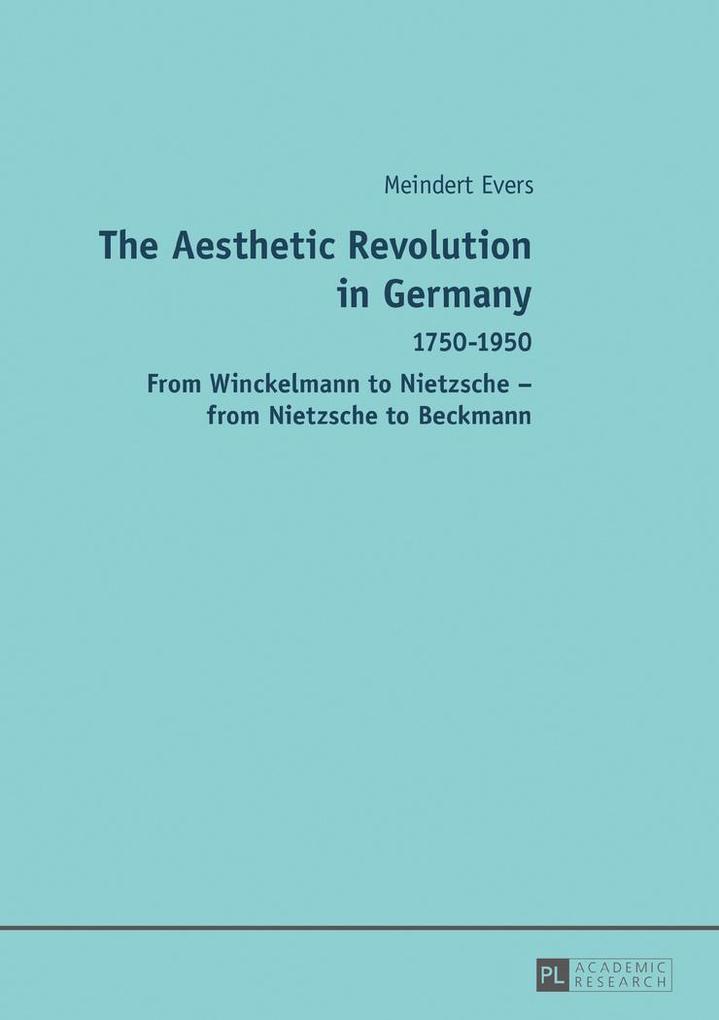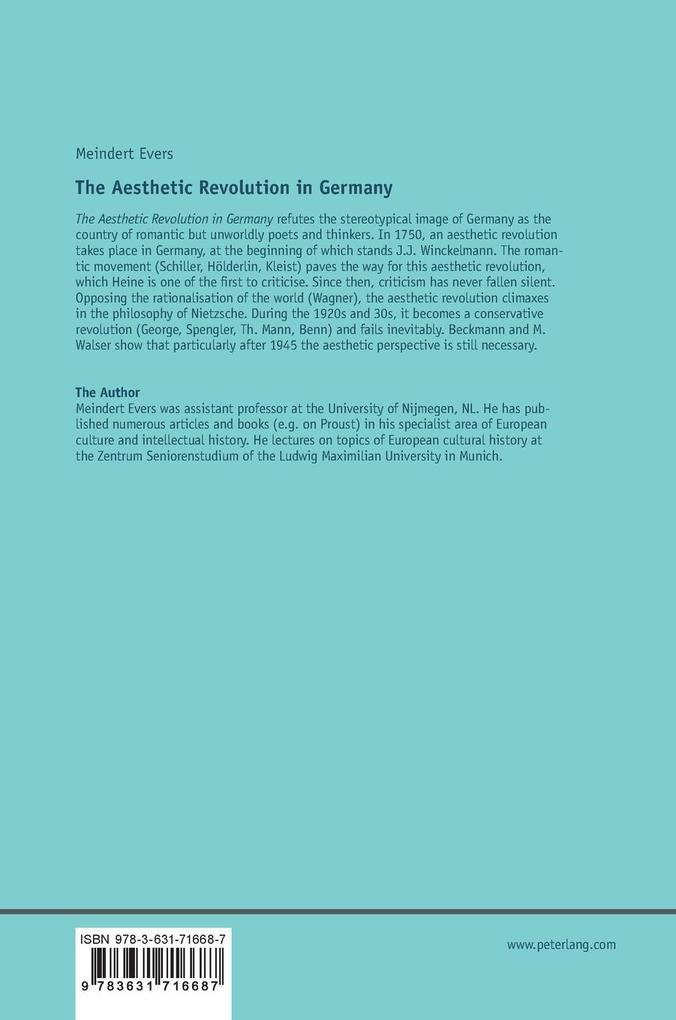
Zustellung: Mo, 16.06. - Do, 19.06.
Versand in 1-2 Wochen
VersandkostenfreiBestellen & in Filiale abholen:
The rationalisation of the world is answered in Germany by an Aesthetic Revolution (Winckelmann, the romantic movement). It culminates in Nietzsche, and becomes a conservative revolution in the 1920s. After 1945, Beckmann and M. Walser embody the necessity of the aesthetic perspective.
The Aesthetic Revolution in Germany refutes the stereotypical image of Germany as the country of romantic but unworldly poets and thinkers. In 1750, an aesthetic revolution takes place in Germany, at the beginning of which stands J. J. Winckelmann. The romantic movement (Schiller, Hölderlin, Kleist) paves the way for this aesthetic revolution, which Heine is one of the first to criticise. Since then, criticism has never fallen silent. Opposing the rationalisation of the world (Wagner), the aesthetic revolution climaxes in the philosophy of Nietzsche. During the 1920s and 30s, it becomes a conservative revolution (George, Spengler, Th. Mann, Benn) and fails inevitably. Beckmann and M. Walser show that particularly after 1945 the aesthetic perspective is still necessary.
Inhaltsverzeichnis
Birth of the aesthetic man: J.J. Winckelmann - Romantic rebellion - Critical voices - From Heine to Lukács - Aesthetic revolution versus mechanistic world view: Schiller, Hölderlin, Kleist, Wagner - Nietzsche as culmination of the aesthetic perspective - Conservative revolution (George, Spengler, Mann, Benn) - The aesthetic revolution after 1945: Beckmann, M. Walser
Produktdetails
Erscheinungsdatum
10. März 2017
Sprache
englisch
Auflage
1. Auflage
Seitenanzahl
362
Autor/Autorin
Meindert Evers
Verlag/Hersteller
Produktart
gebunden
Abbildungen
5 Abb.
Gewicht
580 g
Größe (L/B/H)
216/153/23 mm
ISBN
9783631716687
Entdecken Sie mehr
Bewertungen
0 Bewertungen
Es wurden noch keine Bewertungen abgegeben. Schreiben Sie die erste Bewertung zu "The Aesthetic Revolution in Germany" und helfen Sie damit anderen bei der Kaufentscheidung.










